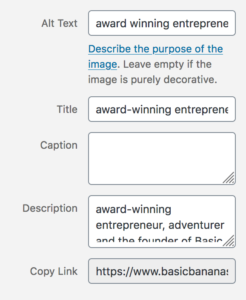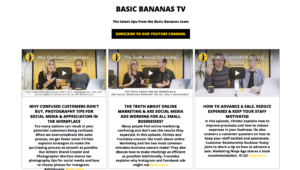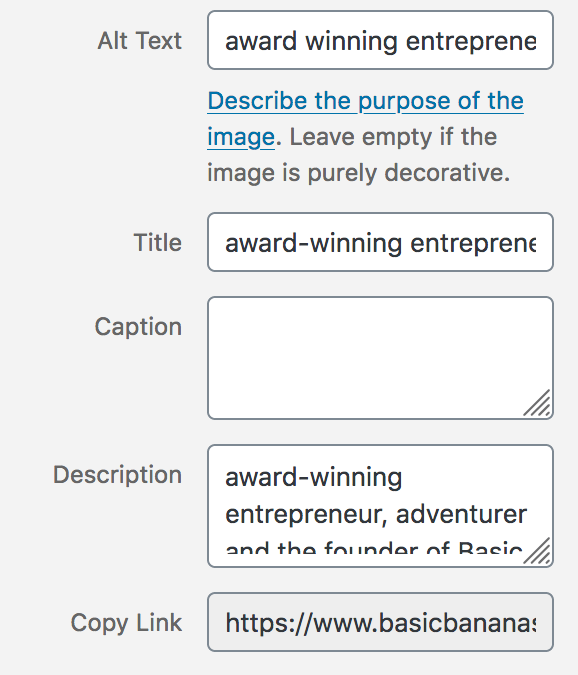When business owners hear the word SEO, it often freaks them out a little. SEO is such a mysterious thing to most people, but some of the most powerful SEO strategies are not that complicated to implement (when you know how of course) and most people can do it themselves.
There are parts of SEO you should just ignore if you‘re busy running a business, like complicated information on how the algorithm works, all the techy words used, which are sure to confuse you and even how much of Google Analytics should you understand can be overwhelming.
So the purpose of this article is to give you the most simple and powerful things to implement across your websites to ensure you‘re getting the best rankings. And if you are outsourcing, you‘ll have a better understanding of what you are paying for. Especially if they are doing work on your website.
The most powerful things you can do actually don’t take very long to implement and you don‘t have to be a technical wiz kid to understand how to do them.
Step 1: Define your keywords and key phrases
The first step is to choose which keywords and phrases you want to rank for. A ninja tip on this point is to keep in mind that the broader your keywords are the more competition there is likely to be for them.
To get better rankings, we like to use a mix of keywords, some very specific to get quicker rankings and then aim to get better ranking for the more broad terms over a longer period of time.
For example, if you were a dentist based at Bondi Beach in Sydney and you target the keyword ‘Dentist‘ there will be a lot of competition. You‘ll be competing against every other dentist on earth. However, if you target the phrase ‘Dentist Sydney‘, there will be less competition. An even better phrase could be ‘Dentist Bondi Beach, Sydney‘, because there will be even less competition for that phrase and it’s likely that most of your competitors in your area will have no idea what they‘re doing, so you‘ll rank higher a lot quicker.
Choosing specific phrases doesn‘t have to be based on a location, you could also list a specific product or service and who it‘s for. An example is ‘T-shirts for pregnant mums‘ which is going to get higher rankings easier than ‘T-shirts‘ alone.
With this strategy in mind, it’s now your turn to create a list of the top 10 phrases you want to target and list them in order of priority.
Step 2: Decide where to put your keywords and key phrases on your website
Each page on your website should be thought of as a stand-alone entry point for new prospects, so if someone searches a key phrase you are targeting, then hopefully your site comes up in their search results and they come directly to that page on your site.
So how do we choose which page to use your keywords on? You should look at how many pages you have on your website, without counting things like blog posts. A basic website typically has five pages or more, e.g. Home, About Us, Products, Testimonial and Contact Us. This number can vary a lot depending on the setup of your website.
These main pages are the pages you want to use your top keywords and key phrases on. Pick one to two phrases to target for each page. If you try to target too many phrases on one page it will reduce your ranking, so aim for one to two phrases per page.
If you got really into it and created a list of 50 keywords that you want to target, don’t worry, we’ll still be able to use them! Use your six top keywords on your main website pages and all the remaining keywords could be great topics for you to target by creating articles on your blog.
You can also use your top key phrases on your main pages AND in on blog posts. It’s ok to have similar words and phrases across multiple pages on your site.
Step 3: Put your keywords in the right places on your website
Here’s where you need to put your keywords on your website.
Page title: There is a place in the backend of your website called the page title. This is where you should put the keywords for each page.
Headline: If there‘s a headline on the page try to include the keywords in the headline.
Page content: Try to include your keywords in the body text of your pages. I like to aim for twice if it flows with the rest of the text on that page.

Step 4: Name the images on your website to include the keywords you‘re targeting on each page
Most images people use on their website have a name like 1200.jpg or blueshirtpic.jpg which isn’t going to help Google know what the image is (unless you‘re targeting ‘blue shirts’).
For our dentist in Bondi Beach example, a better name for the image would be ‘Smiling at Bondi Beach Dentistry‘.
Be aware not to name the different images with the exact same name, or Google will think it‘s the same image a few times.
If you have four images on a page then name them all slightly different and get a little creative at putting the keywords into each images name, so Google will discover your page has lots of content about the keywords you‘re targeting.
Here‘s how it will look with WordPress websites to name your images:

Step 5: Keep creating new entry points by creating new content
Create articles on your website’s blog targeting different keywords. The more content you have which targets different keywords the more likely you are to be found for lots of different searches. Each page presents a different entry point for viewers to find you. It‘s like adding more real estate to your website over time.
It‘s a slow-ish process, but as you add more and more, you should see an increase over time and the real benefit is once you‘re ranking well, you don‘t need to spend any money to keep ranking well, the content is there on your site for as long as you want it to be there.
How long will it take for my site’s rankings to improve?
Google will typically re-index your site within 30 days, so if you haven‘t moved up the rankings overnight, don‘t panic and go changing things, because it‘s likely Google hasn‘t even discovered your changes yet.
Websites that constantly add new content will be re-indexed quicker because Google learns to check that website regularly, but if you don‘t publish new content on your site every day, then give it time to discover the changes and adjust things.
Hope this will help you to improve your rankings! Feel free to share this article with a fellow business owner.
– Christo Hall
We’ll be back in these cities soon: Sydney, Melbourne, Brisbane, Perth, Adelaide, Newcastle, Canberra and Auckland.


